|

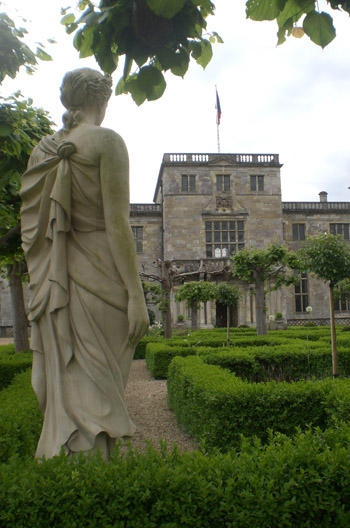 Wilton House Grottoes
Wilton House Grottoes
Wilton House
Wilton
Wiltshire
United Kingdom
SP2 0BJ
Telephone: 01722 746700
The were two grottoes at Wilton House in Wiltshire albeit none survive today. The estate has been the seat of the Herbert family, Earls of Pembroke, for over four and a half centuries, although the estate itself is recorded as being rebuilt after the Norman conquest. Prior to this it was a Benedictine Nunnery established in the eighth century when Wilton was the capital of Wessex.
Illustrations right - the two grottoes in early documents and the entrance to Wilton House.
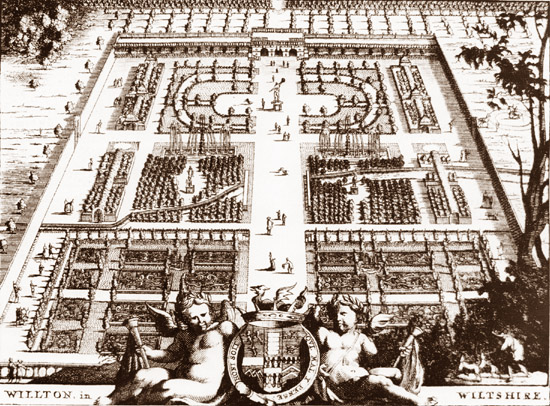
Above - the layout of the 1630's garden looking south from the house. The first grotto is the furthest building.
The first grotto resulted from a landscaping project to develop a garden 1000 feet long and 400 feet wide on the south side of the house. 1632-1635. This was at the instigation of the King Charles I who visited the house following in the footsteps of earlier monarchs. The grotto was located on the hillside to the south and comprised a three arch structure, likely built as a place to sit and survey the garden and house from. The grotto chamber was added behind a year or two later.
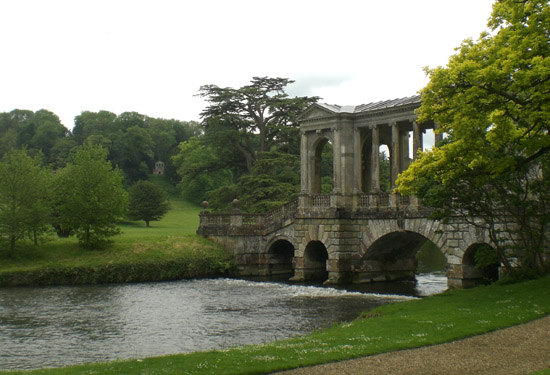
Above - the hillside where the first grotto was located
Aubrey records the construction "It was he that did put Philip ...Earl of Pembroke upon making this magnificent garden and grotto., and to new build that side of the house that fronts the garden, with two stately pavilions at each end all al Italiano." The architect was Isaac De Caux and the grotto included water features to act as booby traps for the unwary visitor. Four stone plaques adorned the interior. They represented Triton, Venus, Europa and Triton with a horn and are attributed to Nicholas Stone. The grotto has not survived although the four plaques have. The are now located in the Orchid House, an early nineteenth century building standing on the site of the second grotto.
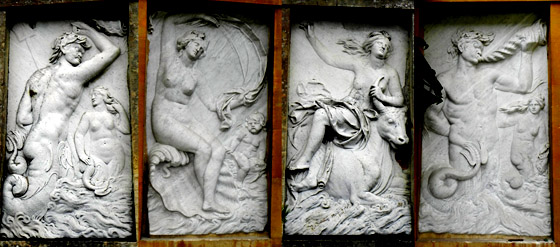
Above - the four plaques from the first grotto now located at Orchid House
Celia Fiennes in her diary of her travels circa 1690 describes the gardens and grotto at Wilton.
"The gardens are very fine, with many gravel walkes with grass squaires set with fine brass and stone statues, with fish ponds and basons with figures in the middle spouting out water, dwarfe trees of all sorts and a fine flower garden, much wall fruite: the river runs through the garden that easeily conveys by pipes water to all parts. Grottoe is at the end of the garden just the middle off the house, its garnished with many fine figures of the Goddesses, and about two yards off the doore is severall pipes in a line that with a sluice spouts water up to wet the Strangers; in the middle roome is a round table, a large pipe in the midst, on which they put a crown or gun or a branch, and so it spouts the water through the carvings and poynts all around the roome at the Artists pleasure to wet the Company; there are figures at each corner of the roome that can weep water on the beholders, and by a straight pipe on the table they force up the water into a hollow carving of the rooff like a crown or coronet to appearance, but is hollow within to retaine the water forced into it in great quanteryes, that disperses in the hollow cavity over the roome; on each side is two little rooms which by the turning their wires the water runnes in rockes you see and hear it, and also it is contrived in one room that it makes the melody of the Nightingerills and all sorts of birds which engage the curiosity of the Strangers to go in to see, but at the entrance off each room, is a line of pipes that appear not till a sluice moved it washes the spectators, designed for diversion. The Grottoe is leaded on the top where are fish ponds, and just without the grottoe is a wooden bridge over the river, the barristers (balusters) are set out with Lyons set thick on either side with their mouths open and by a sluice spout out water each to other in a perfect arch the length of the bridge; there are fine woods beyond the house and a large parke walled in."
[Source: Morris C. (1947) The Journeys of Celia Fiennes, Cresset Press.]
The second grotto, which dates from a century later, was located on the west side of the main house in the Italianate Garden. The garden was divided by the River Nadder in the locality of the later Palladian bridge. There was an eighteenth century scheme, which incorporated natural landscaping advice given by Capability Brown. Although he came to Wilton and was paid for a proposal he made, his proposal was never used. The landscaping of the gardens had already been undertaken much earlier by the 9th Earl who was known as the architect earl and designed his own alterations. He was also well known for several public works including Westminster Bridge in London. The grotto frontage comprised a central door with panels either side. There was a fountain aligned with the entrance doorway inside. Like the first grotto it has not survived intact although the impressive facade was later incorporated into the School House, now a private residence on the western side of the estate, where it can be seen today.
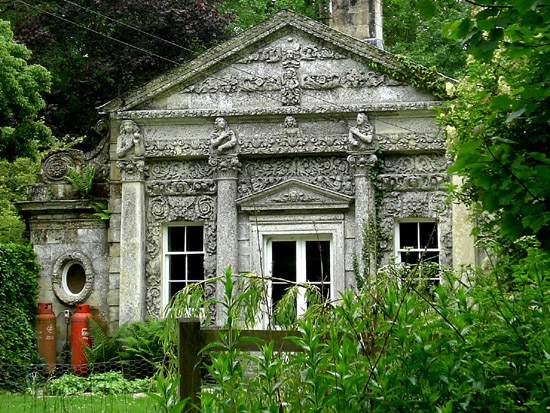
Above - the facade of the second grotto - incorporated into the School House.
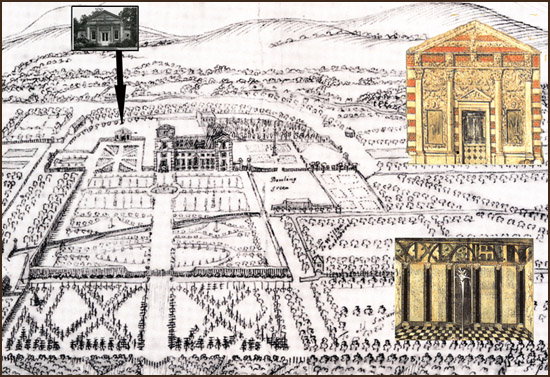
Above - the location of the second grotto to the west of the house in the Italianate Garden; this view looking north towards the house.
We are grateful to Carol and John Kitching for their guidance and pictures in preparing this summary
Website: Click Here
ADDITIONAL INFORMATION
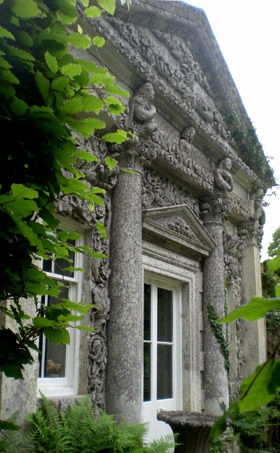
Picture right - the second grotto entrance in its present position.


GREAT BRITISH GROTTO GRADING
Click to go to Grotto.Directory home page
CONSTRAINTS
On private property, Open set times only
FACILITIES
Access by Road, Access on Foot, Entry Fee, Grottoes - more than one, Part of a larger tourism attraction, Restaurant/Food, Retail Souvenir Shop, Toilets
LANDSCAPE
Country town/village
REGION
England - Southern
THE FEATURES PRESENT
+External rock structures, either real or simulated, GRADED ONE
|











 Wilton House Grottoes
Wilton House Grottoes